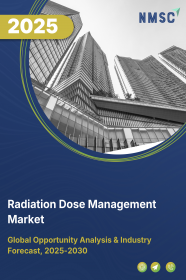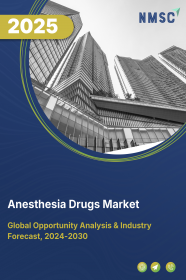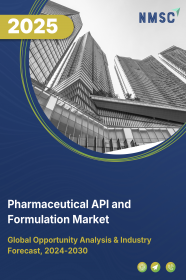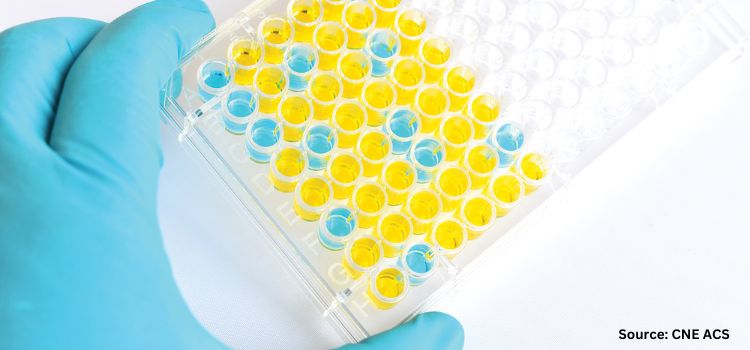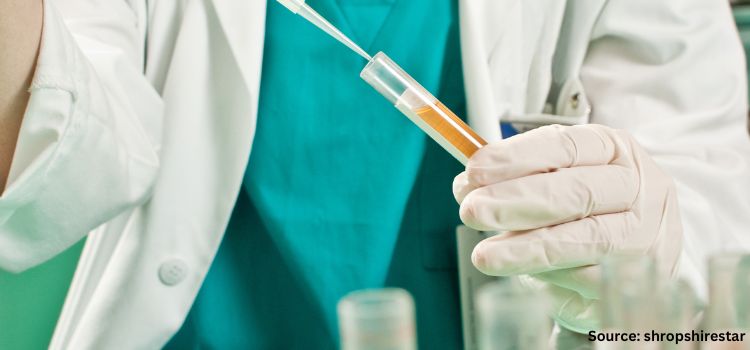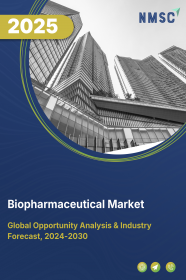
Biopharmaceutical Market by Product (Monoclonal Antibody, Interferon, Insulin, Growth and Coagulation Factor, Erythropoietin, Vaccine, Hormone, and Others) and by Application (Oncology, Blood Disorder, Metabolic Disease, Infectious Disease, Cardiovascular Disease, Neurological Disease, Immunology, and Others)- Global Opportunity Analysis and Industry Forecast 2022-2030
Industry: Healthcare | Publish Date: 18-Mar-2025 | No of Pages: 529 | No. of Tables: 371 | No. of Figures: 316 | Format: PDF | Report Code : HC106
US Tariff Impact on Biopharmaceutical Market
Trump Tariffs Are Reshaping Global Business
Market Definition:
The Biopharmaceuticals Market was valued at USD 345.84 billion in 2021 and is predicted to reach USD 974.48 billion by 2030 with a CAGR of 11.7% from 2022-2030.
Biopharmaceutical products are produced in living organisms including white blood cells or bacteria. Biopharmaceuticals include vaccines, somatic cells, blood components, allergenic, gene therapies, and recombinant therapeutic protein among others. Intravenous, subcutaneous injections and intramuscular are commonly used ways of delivering biopharmaceuticals. Among these, subcutaneous injections are mostly preferred as they require minimal skills and are least invasive. Intramuscular injections are commonly used for vaccines.
Market Dynamics and Trends:
Surging incidences of chronic diseases such as cancer, cardiovascular diseases (CVDs), and diabetes, among others is one of the key factors driving the demand for biopharmaceuticals. Also, rapid changes in societal behavior coupled with growth in aging population are resulting into a surge in chronic diseases. Moreover, growing middle class population and rapid urbanization, leads to people adopting a more sedentary lifestyle. This results in higher obesity rates and diseases such as diabetes and CVDs upward.
For instance, around 17.9 million people die every year globally due to cardiovascular diseases, followed by cancer at 9.3 million and respiratory diseases at 4.1 million. In addition to this, rising cancer prevalence in developing economies of Asia Pacific coupled with high consumption of alcohol beverages & tobacco bolsters the industry growth during the review period.
Moreover, high R&D investments plays a critical role in the growth of biopharmaceutical industry. Increasing number of epidemics, changing disease rate, less immunity, and poor efficacy of some drugs creates a robust demand for product innovation, thus R&D helps in creating ample opportunities to the market players.
However, high cost associated with biopharmaceutical drug production is one of the key factors hampering the market growth during the review period. Biopharmaceutical drugs are complex mixtures that comprises of whole cells or derivatives from human, plant, animal, or micro-organism sources, and thus results in expensive manufacturing process of biologics.
Market Segmentations and Scope of the Study:
The biopharmaceuticals market is segmented on the basis of product, application, and geography. On the basis of product, the market is divided into monoclonal antibody, interferon, insulin, growth and coagulation factor, erythropoietin, vaccine, hormone, and others. On the basis of application, the market is categorized into oncology, blood disorder, metabolic disease, infectious disease, cardiovascular disease, neurological disease, immunology, and others. Geographic breakdown and analysis of each of the aforesaid segments includes regions comprising of North America, Europe, Asia-Pacific, and RoW.
Geographical Analysis:
North America holds the lion share of biopharmaceuticals market during the forecast period. This is attributed to factors such as strong intellectual property system that encourages innovation through data & patent protection, large presence of scientific research base supported by academic organizations and government research funding, and venture capital investments in start-up biopharmaceutical companies. It has one of the most supportive domestic environments for the production & commercialization of pharmaceuticals with minimal market barriers. Also, presence of major key players such as Pfizer, Johnson & Johnson, and Merck, among others, boosts the market growth in this region.
The Asia Pacific market is likely to register a fastest CAGR in the biopharmaceuticals industry on account of increasing prevalence of cancer, heart diseases, and obesity. In addition to this, rising spending on R&D activities to develop innovate biopharmaceutical products, particularly in China, India, and Japan further augment the regional market growth during the assessment period.
Competitive Landscape:
The biopharmaceuticals market comprising of various market players such as Merck KGaA, Pfizer Inc., Abbott, Amgen Inc., MJH Life Sciences, AbbVie Inc, Bristol-Myers Squibb Company, AstraZeneca, Gilead Sciences, Inc., GSK plc., F. Hoffmann-La Roche Ltd, Biogen pharmaceutical, Bayer AG, Novartis AG, Takeda Pharmaceutical Company Limited. These market players are adopting various strategies such as agreement, joint venture, and product innovations across various regions to maintain their dominance in the biopharmaceuticals market.
For instance, in March 2021, Abbott announced that its team of scientists from Abbott, Johns Hopkins, National Institute of Allergy and Infectious Diseases, University of Missouri have found that the prevalence of HIV elite controllers was 2.7- 4.3% in population from democratic Republic of Congo (DRC). Moreover, in September 2020, Elliy Lilly & Company and Amgen formed a joint venture for manufacturing of COVID-19 therapies. The products were considered for manufacturing are neutralizing antibodies including LY-CoV-555.
Key Benefits:
-
The biopharmaceuticals market report provides the quantitative analysis of the current market and estimations through 2022-2030 that assists in identifying the prevailing market opportunities to capitalize on. 2019 is the historical year and 2020 is the base year.
-
The study comprises a deep dive analysis of the biopharmaceuticals market trend including the current and future trends for depicting the prevalent investment pockets in the market.
-
The information related to key drivers, restraints and opportunities and their impact on the biopharmaceuticals market is provided in the report.
-
The competitive analysis of the market players along with their market share in the biopharmaceuticals market
-
The SWOT analysis and Porters Five Forces model is elaborated in the study.
-
Value chain analysis in the market study provides a clear picture of the stakeholders’ roles.
Key Market Segments:
By Product
-
Monoclonal antibody
-
Interferon
-
Insulin
-
Growth and coagulation factor
-
Erythropoietin
-
Vaccine
-
Hormone
-
Others
By Development
-
Outsource
-
In-house
By Drug Type
-
Proprietary
-
Biosimilars
By Mode of Delivery
-
Injectables
-
Inhalation/Nasal Sprays
-
Others
By Application
-
Oncology
-
Blood Disorder
-
Metabolic Disease
-
Infectious Disease
-
Cardiovascular Disease
-
Neurological Disease
-
Immunology
-
Others
By Geography
-
North America
-
The U.S.
-
Canada
-
Mexico
-
-
Europe
-
The U.K.
-
Germany
-
France
-
Italy
-
Spain
-
Denmark
-
Netherlands
-
Finland
-
Sweden
-
Norway
-
Russia
-
Rest of Europe
-
-
Asia-Pacific
-
China
-
Japan
-
India
-
South Korea
-
Australia
-
Indonesia
-
Singapore
-
Taiwan
-
Thailand
-
Rest of Asia-Pacific
-
-
RoW
-
Latin America
-
Middle East
-
Africa
-
Key Players:
-
Merck KGaA
-
Pfizer Inc.
-
Abbott
-
Amgen Inc.
-
MJH Life Sciences
-
AbbVie Inc
-
Bristol-Myers Squibb Company
-
AstraZeneca
-
Gilead Sciences, Inc.
-
GSK plc.
-
F. Hoffmann-La Roche Ltd
-
Biogen pharmaceutical
-
Bayer AG
-
Novartis AG
-
Takeda Pharmaceutical Company Limited
REPORT SCOPE AND SEGMENTATION:
|
Parameters |
Details |
|
Analysis Period |
2021–2030 |
|
Base Year Considered |
2021 |
|
Forecast Period |
2022–2030 |
|
Market Size Estimation |
Billion (USD) |
|
Market Segmentation |
By Product (Monoclonal Antibody, Interferon, Insulin, Growth and Coagulation Factor, Erythropoietin, Vaccine, Hormone, And Others) and by Application (Oncology, Blood Disorder, Metabolic Disease, Infectious Disease, Cardiovascular Disease, Neurological Disease, Immunology, And Others) |
|
Geographical Segmentation |
North America (U.S., Canada, Mexico) Europe (UK, Germany, France, Spain, Italy, Netherlands, Rest of Europe), Asia-Pacific (China, India, Japan, South Korea, Australia, Singapore, Indonesia, Rest of Asia-Pacific), Rest of the World (Latin America, Middle East, Africa) |
|
Companies Profiled |
Abbott Laboratories, Amgen Inc., Biogen, Lilly, F. Hoffmann-La Roche Ltd, Johnson & Johnson, Merck & Co., Inc., Novo Nordisk, Pfizer Inc., Safoni, AstraZeneca, and Moderna. |

















 Speak to Our Analyst
Speak to Our Analyst



